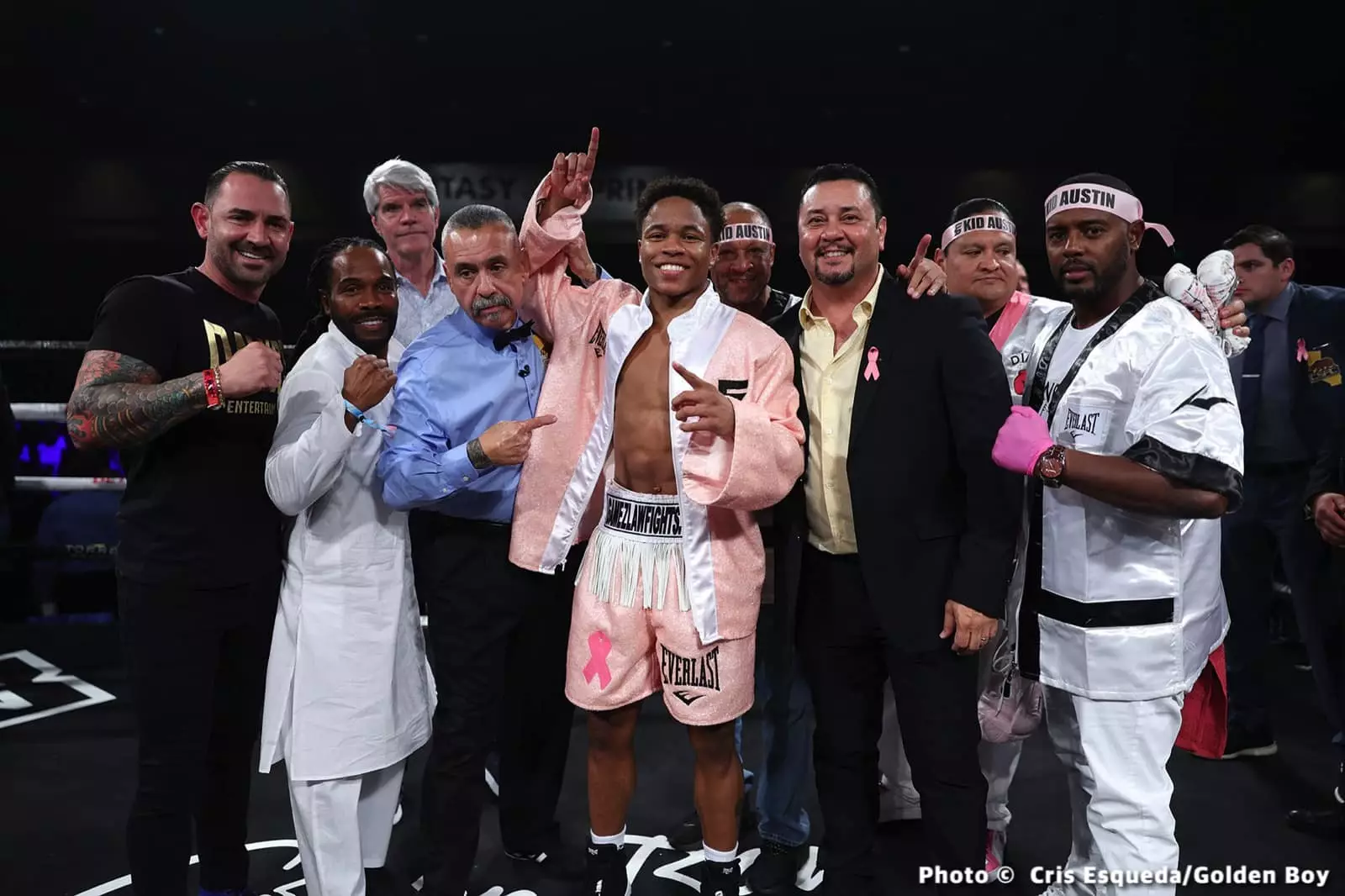The world of professional boxing is often characterized by intense rivalries, both inside and outside the ring. The recent fallout between Oscar De La Hoya’s Golden Boy Promotions and Shakur Stevenson’s team led by Eddie Hearn exemplifies this dynamic, culminating in a fierce public dispute regarding the potential matchup between Stevenson and the rising star, Floyd Schofield. This scenario presents an interesting case study in boxing promotion, strategy, and the delicate balancing act between nurturing emerging talent and chasing the lucrative opportunities that come with established fighters.
The Unexpected Showdown Over Schofield
Oscar De La Hoya’s refusal to allow Floyd Schofield to be a challenger for Shakur Stevenson on February 22 in Riyadh raises significant questions about the integrity and intentions of boxing promoters. De La Hoya quickly dismissed the notion, criticizing Hearn for selecting Schofield—a promising but relatively inexperienced fighter—with a record of 18 wins and zero losses—over more seasoned contenders in the lightweight division. De La Hoya’s comments represent a stark reminder of the competitive nature of boxing promotions, as he perceives Hearn’s choice as undermining the career trajectory of a young fighter who has yet to earn a title.
The implications of this decision are substantial for Schofield, dubbed “Kid Austin.” If forced into a match against Stevenson, who has a formidable record of 22 wins and no losses, it could jeopardize Schofield’s budding career despite the potential financial gains typically associated with a high-profile bout. For many in the boxing community, including fans, this matchup seemed ill-conceived; the disparity in experience and skills would likely thwart any competitive aspect, rendering the fight more of a formality than a contest.
De La Hoya’s public rebuke of Hearn illustrates the strategic maneuvering that often defines boxing. The promoter stated, “This is exactly what I mean when I say Eddie doesn’t know how to build a career,” signaling that he believes Hearn’s methodology stifles career development for young fighters by prematurely matching them against elite competition. Instead of positioning Schofield to potentially challenge the reigning champion, he suggests that Hearn should consider targeting more accomplished fighters for Stevenson—like Frank Martin—implying that the pathway to success should be linear and methodical rather than haphazard.
Nonetheless, this raises the question of how promoters define success. Hearn’s decision could be viewed through a different lens: perhaps he is capitalizing on marketability, knowing that high-profile fights—even against prospects—can engender substantial revenues. The boxing world thrives on narratives, and placing a young contender in the spotlight against an Olympic medalist could generate buzz that benefits both fighters in the long run.
In the volatile world of social media, Stevenson voiced his frustration regarding De La Hoya’s decision, alleging that Schofield’s promoter was not adequately elevating his fighter. His comment suggested a willingness to engage in trash talk, perhaps as a mechanism to amplify interest in a fight he believed could have substantial pressing implications. Much of the public discourse surrounding this fight portrays Stevenson as the superior talent—a point echoed by fans who have questioned the value of pitting a young prospect against an established champion.
Critics of this potential bout also raised concerns about the broader context of boxing’s risk-reward mechanics. As Stevenson encounters increasing demands for elite-level competition, the anxiety surrounding mismatches becomes more pronounced. Would this be beneficial for Schofield, or would it tarnish his reputation before it is fully formed? These are pressing questions that boxing stakeholders must grapple with in an era that craves both integrity and spectacle.
The tension surrounding the potential Stevenson-Schofield matchup illustrates the complicated intersection of youth, talent, and promotion in boxing. While Oscar De La Hoya aims to protect his fighter’s prospects and career, he also raises essential points about strategic decision-making in matchmaking. Conversely, Eddie Hearn’s approach raises critical discussions about innovation in promoting younger talent even if it comes at a risk.
Ultimately, this scenario invites stakeholders—promoters, fighters, and fans—to reflect on what they deem as success in professional boxing. As the industry continues to evolve, ensuring that emerging athletes are nurtured through strategic, well-timed matchups may prove essential in shaping the future of the sport. Whether Stevenson’s next fight will meaningfully challenge this concept remains to be seen, but one thing is certain: the drama and debate are poised to capture the hearts of boxing enthusiasts everywhere.


Leave a Reply